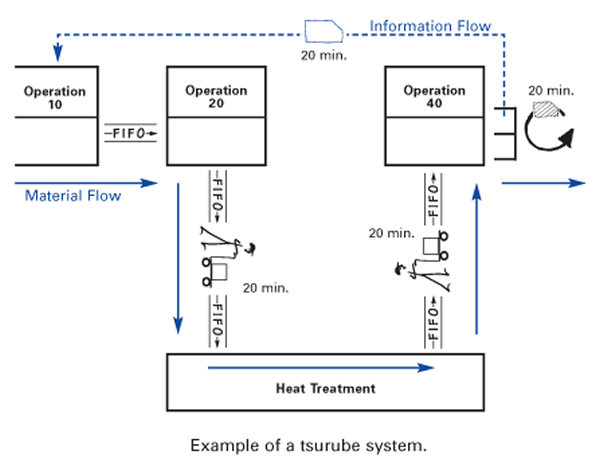Tsurube System
A method for maintaining flow between decoupled processes. Such processes may be separated due to a step outside the line or plant that is too expensive or too big to move. Using a pull-FIFO technique, tsurube maintains a standard number of parts exiting and returning to the system in sequential order. Tsurube houshiki is the Japanese term for a two-bucket system of drawing water from a well: one empty bucket goes down for water while a full one—attached to the same rope running through a pulley—comes to the top.
In the example shown below, which shows part of a value stream, a tsurube system maintains flow between the main process and heat treatment. Every 20 minutes a set number of items arrive at the heat treatment FIFO lane from the FIFO lane after operation 20. Also every 20 minutes, the same number of treated items are transported from the FIFO lane after heat treatment to the FIFO lane for the next step, operation 40. The FIFO lanes maintain the sequence of items to be processed. (The solid blue arrows show material flow through the processes.) Because of the paced delivery and withdrawal, managers will know in 20 minutes if there is any disruption. To improve the system, managers would ask why heat treatment is isolated and how it could be coupled with the system. Having stable manufacturing processes is a precondition for implementing a tsurube system in order to maintain flow and pull production.
